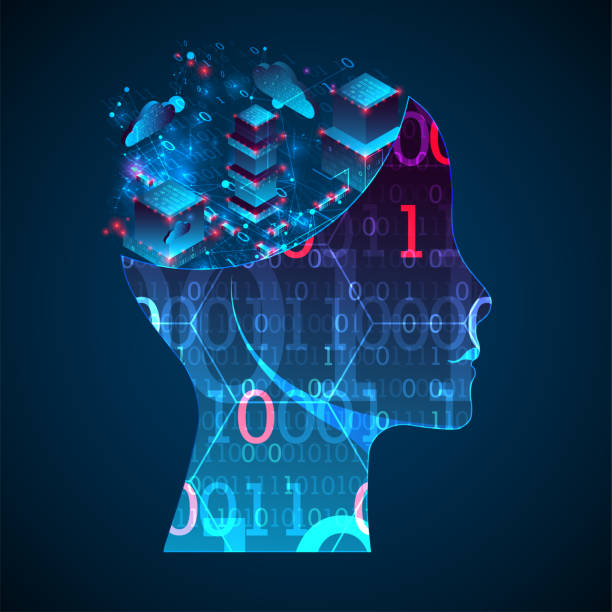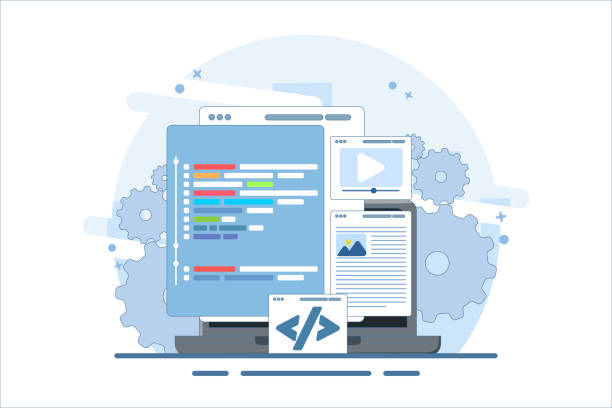Introduction to the Importance of Modern UI Website Design

In today’s world, where the pace of technological change is dizzying, modern UI website design is no longer just a competitive advantage, but a vital necessity for the survival and growth of any business in the online space.
User interface and #user_experience (UI/UX) are the beating heart of any website looking to effectively interact with its audience.
An old and user-unfriendly website design quickly alienates users and will have a high #bounce rate.
This not only damages #brand_reputation but also directly impacts #conversion_rate and ultimately business #profitability.
Today, users expect a smooth, visually appealing, and efficient experience.
These expectations are met not only through aesthetics but also through flawless performance, high loading speed, and easy navigation.
Usability, in essence, means that a user can easily interact with the site and achieve their goals without any confusion or need for specific training.
Modern design includes using the latest standards and technologies to create a seamless experience across all devices, from desktop to mobile and tablet.
This approach ensures that your website not only looks good but also has high efficiency and usability, which significantly helps in retaining and attracting new customers.
Focusing on user needs and behaviors is the cornerstone of modern design.
Is your current e-commerce website design causing you to lose customers and sales?
RasaWeb is your solution with modern and user-friendly e-commerce website designs!
✅ Significant increase in conversion rates and sales
✅ Strong branding and building customer trust
⚡ Get a free consultation for e-commerce website design from RasaWeb!
Key Principles in Modern UI Website Design: Education and Guidance

To achieve a successful modern UI website design, understanding and applying several key principles is essential.
The first principle is simplicity and clarity.
The user interface should not be complex or confusing; every element should have a clear purpose and be easily understandable.
This includes logical information layout, using simple language, and avoiding unnecessary elements that can distract the user.
The second principle is consistency.
Users expect similar elements throughout the website to perform uniformly.
For example, if a button is used on one page to perform a specific action, it should have the same functionality on other pages.
This consistency helps reduce the user’s cognitive load and makes learning how to use the site easier.
The third principle is visual feedback.
Users should always know what is happening; has their form been submitted? Has an item been added to the cart? Visual indicators such as small animations, changes in button color after clicking, or confirmation messages provide this feedback.
The fourth principle is accessibility.
Website design should be usable for all users, including individuals with various disabilities.
This includes using appropriate color contrast, keyboard navigation, and providing alternative text for images.
The fifth principle is responsiveness or responsiveness; the website should display well across different screen sizes (from mobile to desktop) and provide a consistent user experience.
These educational principles form the foundation of an excellent user experience and help your website shine among competitors.
Specialized Tools and Technologies in Modern UI Website Design
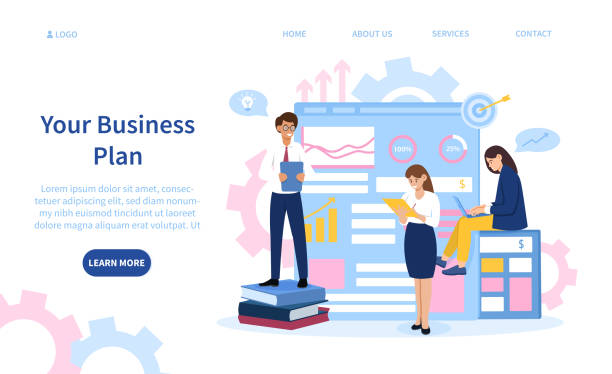
The world of modern UI website design is constantly advancing, and web developers and designers leverage a range of specialized tools and technologies to create unparalleled user experiences.
In visual design and prototyping, tools like Adobe XD, Figma, and Sketch are highly popular.
These tools enable UI design, wireframing, interactive prototyping, and even user testing.
Figma, in particular, has gained a special place due to its real-time collaboration capabilities among teams.
For implementing these designs on the web, deep knowledge of HTML5, CSS3, and JavaScript is crucial.
CSS frameworks like Bootstrap and Tailwind CSS help accelerate the development process of responsive user interfaces.
In JavaScript, leading frameworks such as React, Angular, and Vue.js are used to develop complex, dynamic, and SPA (Single Page Application) user interfaces, providing a much smoother user experience.
These frameworks allow for building reusable components and facilitate state management for large applications.
Additionally, project management tools like Jira and Trello for team coordination, and version control tools like Git and GitHub for code management and collaboration among developers, play key roles.
Using these tools and technologies helps teams to realize modern UI website design with higher efficiency and quality.
Table 1: Popular Tools in Modern UI Design and Development
| Category | Tool/Technology | Main Use |
|---|---|---|
| UI/UX Design | Figma | Wireframing, Prototyping, Team Collaboration |
| UI/UX Design | Adobe XD | UI Design, Rapid Prototyping |
| JavaScript Framework | React.js | Building Dynamic UIs and SPAs |
| JavaScript Framework | Vue.js | Developing Advanced and Efficient Web Applications |
| CSS Framework | Tailwind CSS | Accelerating Coding and Responsive Development |
Analyzing the Impact of User Research on Modern UI Website Design
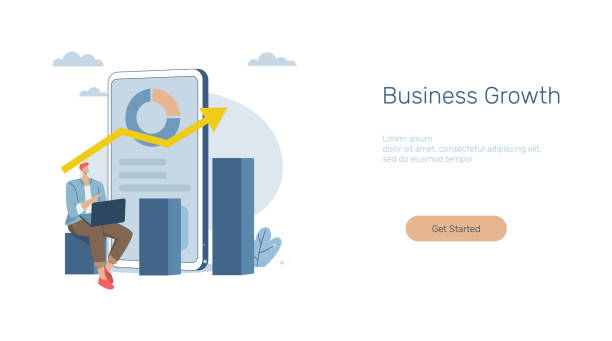
User research is the backbone of any successful modern UI website design.
Without a deep understanding of users, their needs, behaviors, and challenges, any design would, at best, be based on guesswork.
This analytical approach involves collecting data through interviews, surveys, observing user behavior, and usability tests.
Using this information, designers can create realistic “user personas” that represent different target user groups, helping them better understand each group’s needs and goals.
For example, a young user might prioritize speed and ease of navigation, while an older user might value readability and visual simplicity.
This research not only helps identify existing problems in the user interface but also reveals opportunities for improvement and innovation.
Can users easily find the product they are looking for? Is their purchase process smooth and trouble-free? The answers to these questions are obtained through precise analysis of user data.
Furthermore, A/B testing and Heatmap analysis are powerful tools that allow designers to see how users interact with the website and which elements attract the most attention.
These insights base design decisions on real data, not assumptions.
The final result is a website that is not only visually appealing but also effectively responds to user needs and provides an enjoyable and efficient experience.
This continuous analysis ensures that your website is constantly improving and adapting to user expectations.
Are you tired of your company’s website not meeting your expectations? With RasaWeb, design a professional website that truly represents your business.
✅ Increased acquisition of new customers and sales leads
✅ Enhanced brand credibility and trust among your audience
⚡ Get a free website design consultation now!
The Importance of Responsive and Mobile-First Design in Modern UI Website Design

In the current era, where the majority of users connect to the internet via mobile devices, responsive design and the Mobile-First approach are no longer optional but are fundamental pillars of any modern UI website design.
Responsive Design means that your website can automatically adapt to any screen size, from the smallest smartphones to the largest desktop monitors.
This ensures that content, images, and site layout are displayed correctly on any device, providing a seamless user experience.
The Mobile-First approach goes a step further; in this method, designers first create the mobile version of the website and then proceed to the tablet and desktop versions.
The reason for this is that designing for smaller screens forces the designer to focus on the most essential and necessary content and functionalities, avoiding unnecessary clutter and complexity.
This guiding approach helps simplify the user experience across all platforms and ensures optimal site performance for mobile devices, which is also crucial for SEO and search engine rankings.
Given that Google also prioritizes mobile-friendly websites, neglecting this principle can lead to loss of traffic and potential customers.
A responsive and Mobile-First website not only improves the user experience but also reduces maintenance costs and eliminates the need to develop separate versions for each device.
This is a smart investment in your business’s digital future.
Integrating Artificial Intelligence and Personalization in Modern UI Website Design: News and Emerging Trends

The latest global news and trends in modern UI website design indicate an increasing integration of Artificial Intelligence (AI) and personalization capabilities.
These advancements elevate the user experience to an unprecedented level of customization and intelligent interaction.
AI can analyze user behavior patterns, predict their interests, and automatically suggest relevant content, products, or services.
This means that each user might have a completely unique experience on your website, which directly leads to increased satisfaction and loyalty.
For instance, AI-powered chatbots can answer user questions, guide them through the purchasing process, and even resolve technical issues, which in turn reduces the workload for the support team and increases efficiency.
Recommendation Systems powered by AI can offer suggestions based on browsing history, previous purchases, and even products viewed by similar users, which are highly likely to be of interest to the user.
This is highly effective in e-commerce websites and can significantly boost conversion rates.
Additionally, AI can play a role in dynamically optimizing the user interface; for example, by changing the layout of elements or the order of content display based on user preferences.
These novel and innovative capabilities are changing the face of the web, enabling businesses to establish deeper connections with their customers and create an unforgettable experience for them.
The future of UI design is undoubtedly intertwined with artificial intelligence.
Tips and Common Mistakes in Modern UI Website Design: Questionable Content

Despite all the guidance and principles, the process of modern UI website design is not without its challenges and mistakes.
Why do some websites, despite significant investment, fail to attract and retain users? One common mistake is neglecting user testing.
Many designers and developers assume their UI is “obvious” and doesn’t need testing, whereas the end-user’s perspective often differs from the designer’s.
It is questionable why we rely so much on our intuition and not on real data! Another major mistake is blindly following trends without considering the specific goals and audience of the website.
Is every new trending feature truly suitable for your business? Sometimes, adding unnecessary elements like heavy animations or complex navigation, instead of improving the experience, confuses users and slows down site loading speed.
Furthermore, neglecting accessibility for people with disabilities is not only ethically wrong but can also lead to losing a large segment of potential audience.
Is your website usable for everyone? Additionally, ignoring content during the design process and focusing solely on aesthetics can result in a beautiful but content-less website that fails to convey the business’s core message.
Content is king, and design should be such that it presents content in the best possible way.
Not staying updated with web technologies and standards is another problem that leads to slowness, insecurity, and incompatibility with new browsers.
To achieve a truly modern and effective design, one must learn from these mistakes and base the design process on research, testing, and a critical look at one’s work.
Table 2: Common UI/UX Design Mistakes and Prevention Methods
| Common Mistake | Explanation | Solution/Prevention |
|---|---|---|
| Neglecting User Testing | Assuming user-friendliness without real feedback | Conduct regular usability tests with real users |
| Excessive Complexity | Adding unnecessary features and elements | Prioritize simplicity, clarity, and minimalism |
| Ignoring Accessibility | Disregarding the needs of users with disabilities | Adhere to WCAG standards, use appropriate contrast and ALT text |
| Slow Loading Speed | Heavy images, unoptimized code, and weak server | Optimize images, compress code, use CDN |
| Lack of Mobile Compatibility | Website does not display correctly on small devices | Responsive design and mobile-first approach |
The Future of Modern UI Website Design: Exciting Prospects

The future of modern UI website design is full of exciting innovations and entertaining prospects that will transform our digital experience.
One of the most important trends is the increased use of Voice User Interfaces (VUI) and Gesture User Interfaces (Gesture UI).
Imagine a website you can control with your voice or hand gestures – these technologies are currently under development and will soon become a standard.
This will be particularly beneficial for accessibility and creating a fully immersive experience.
Augmented Reality (AR) and Virtual Reality (VR) will also play a prominent role in the future of web design.
Augmented Reality can allow users to view products in their real-world environment before purchase or receive additional information visually and interactively on real-world images.
These capabilities enhance the shopping experience and content interaction in a fun and novel way.
Furthermore, AI-powered personalization will reach more sophisticated levels, allowing websites to dynamically and instantly adapt to the user’s emotional state, knowledge level, and even geographical location.
Microinteractions and subtle animations will also play a greater role in enhancing the user experience and adding a sense of liveliness to interfaces.
On the other hand, Dark Mode design and various display modes will become standard options, allowing users to customize their visual experience based on personal preferences.
These exciting prospects show how web design is moving towards creating richer, more personalized, and more interactive experiences.
Are visitors leaving your e-commerce site before making a purchase? Don’t worry anymore! With RasaWeb’s professional e-commerce website design services, permanently solve the problem of not converting visitors into customers!
✅ Significant increase in conversion rates and sales
✅ Unparalleled and engaging user experience
⚡ Contact us now for a free consultation!
Measuring Success and Iteration in Specialized Modern UI Website Design
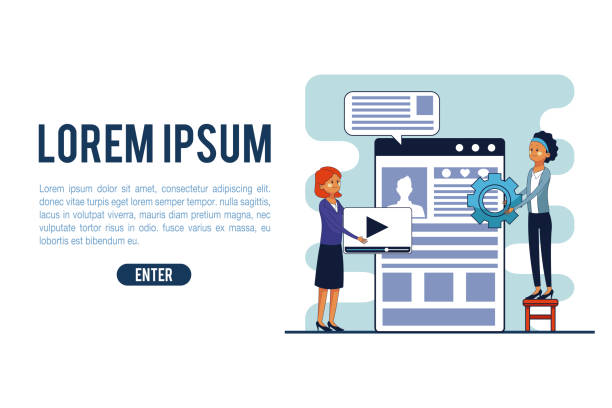
After implementing a modern UI website design, the work is not over; rather, the important phase of measuring success and iteration begins.
This is a specialized and data-driven approach essential for continuous improvement of the user experience.
Key Performance Indicators (KPIs) such as Bounce Rate, Time on Page, Conversion Rate, Pages Per Session, and User Satisfaction are among the most important metrics that should be regularly monitored.
Using analytical tools like Google Analytics, Hotjar (for Heatmaps and user session recordings), and A/B testing tools like Optimizely, helps collect quantitative and qualitative data.
By analyzing this data, one can identify the strengths and weaknesses of the design.
For example, if the bounce rate on a specific page is high, it indicates that the content or design of that page needs revision.
If the conversion rate is low, the purchasing process or Call-to-Action might not be optimized.
These analyses form the basis of the iteration process.
Iteration means making small, gradual changes to the design based on collected feedback and data.
This cycle includes three main stages: measurement, analysis, and action.
Each change should be remeasured to determine its impact on KPIs.
This specialized and continuous approach ensures that your website design is always improving and responding in the best possible way to the needs of your users and the goals of your business.
Accurate measurement and informed iteration are the keys to long-term success in the competitive world of the web.
The Importance of Speed and Performance Optimization in Modern UI Website Design: An Explanation

In today’s world, website speed is one of the most critical factors in modern UI website design, directly impacting user experience, SEO, and ultimately business success.
Today’s users are more impatient than ever; research shows that even a one-second delay in page loading can lead to a significant decrease in conversion rates and an increase in bounce rates.
This explains why performance optimization is a vital element in modern design.
A fast website not only provides a smoother user experience but is also preferred by search engines like Google and can improve your SEO ranking.
Several factors influence website loading speed.
Among the most important are image optimization (compression without loss of quality), code compression (HTML, CSS, JavaScript), using a Content Delivery Network (CDN) for faster content delivery from the nearest server to the user, and using caching for temporary data storage in the user’s browser.
Choosing a powerful and optimized host also plays a significant role in this regard.
Additionally, optimizing frontend and backend coding, removing unnecessary scripts, and reducing the number of HTTP requests can significantly increase site speed.
Tools like Google PageSpeed Insights and Lighthouse can help you identify performance bottlenecks and provide solutions for improving them.
Ultimately, a modern and fast UI website not only keeps users satisfied but also enables them to quickly achieve their goals and have an enjoyable and efficient experience.
Speed is no longer a luxury feature; it is a standard.
Frequently Asked Questions
| Question | Answer |
|---|---|
| What is modern UI? | Modern UI refers to a design that uses new trends, simplicity, excellent user experience, and attractive visual elements. |
| Why is using modern UI important in website design? | It attracts and retains more users, creates a professional impression, improves user experience, and increases conversion rates. |
| What are the main features of a modern UI? | Simplicity, sufficient use of white space, readable typography, appealing and harmonious colors, subtle animations, and responsive design. |
| How is responsiveness related to modern UI? | Responsive design is an essential feature in modern UI that ensures the site displays well across all devices (mobile, tablet, desktop). |
| What is the role of typography in modern UI design? | Choosing appropriate fonts and using them correctly enhances readability and contributes to the site’s beauty and visual identity. |
| What is White Space and why is it important in modern UI? | It is the empty space between different elements on the page, which helps improve readability, user focus, and creates a sense of cleanliness and order. |
| What are the benefits of using animations in modern UI design? | Subtle and purposeful animations can capture user attention, improve interaction, and make information transfer more engaging. |
| How can User Experience (UX) be improved alongside modern UI? | By understanding user needs, simplifying navigation paths, providing appropriate visual feedback, and easy testability. |
| Does modern UI always mean using bright colors? | No, modern UI can use a variety of color palettes, including dark colors; the important thing is to choose harmonious colors suitable for the brand. |
| What are the current trends in modern UI design? | Use of Dark Mode, Neumorphism, Glassmorphism, scroll-based animations, and minimalist design. |
And other services of RasaWeb Advertising Agency in the field of advertising
Smart Marketing Automation: A combination of creativity and technology for digital branding through intelligent data analysis.
Smart SEO: An innovative service for increasing online growth through optimizing key pages.
Smart Sales Automation: An effective tool for increasing sales with the help of Google Ads management.
Smart Link Building: A combination of creativity and technology for attracting customers through proprietary programming.
Smart Website Development: A professional solution for increasing click-through rates with a focus on intelligent data analysis.
And over hundreds of other services in the field of internet advertising, advertising consultation, and organizational solutions.
Internet Advertising | Advertising Strategy | Advertorials
Sources
The Importance of Modern Website DesignThe Role of UI/UX in Digital SuccessWebsite and Success in Digital MarketingUser Interface and User Experience
“`html
? In the fast-paced digital world, your powerful online presence is the key to success. RasaWeb Afarin, with its expertise in digital marketing, from professional corporate website design to search engine optimization, will be the bridge between your business and your audience.
“`
📍 Tehran, Mirdamad Street, next to Bank Markazi, Kazeroun Jonoubi Alley, Ramin Alley, No. 6

